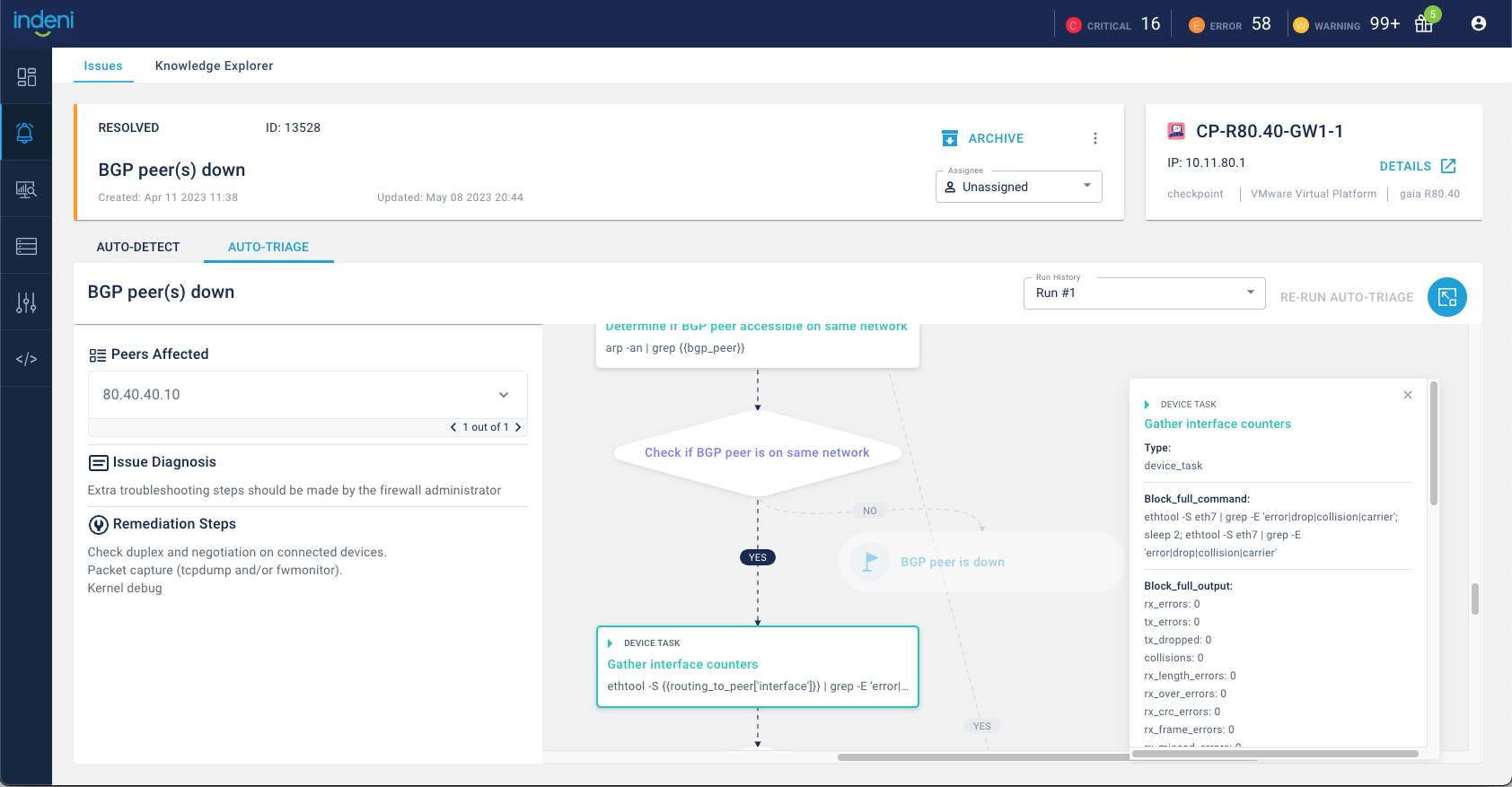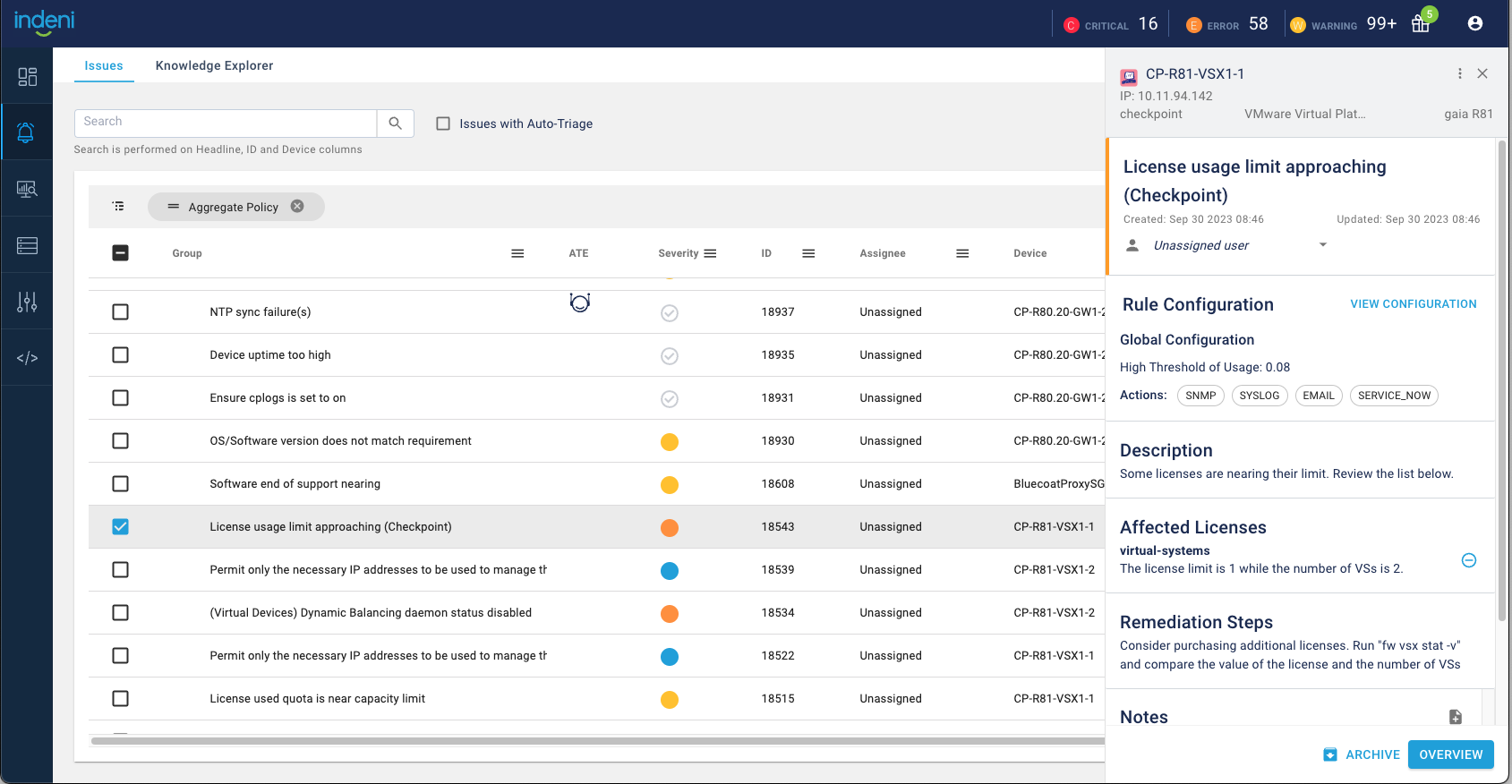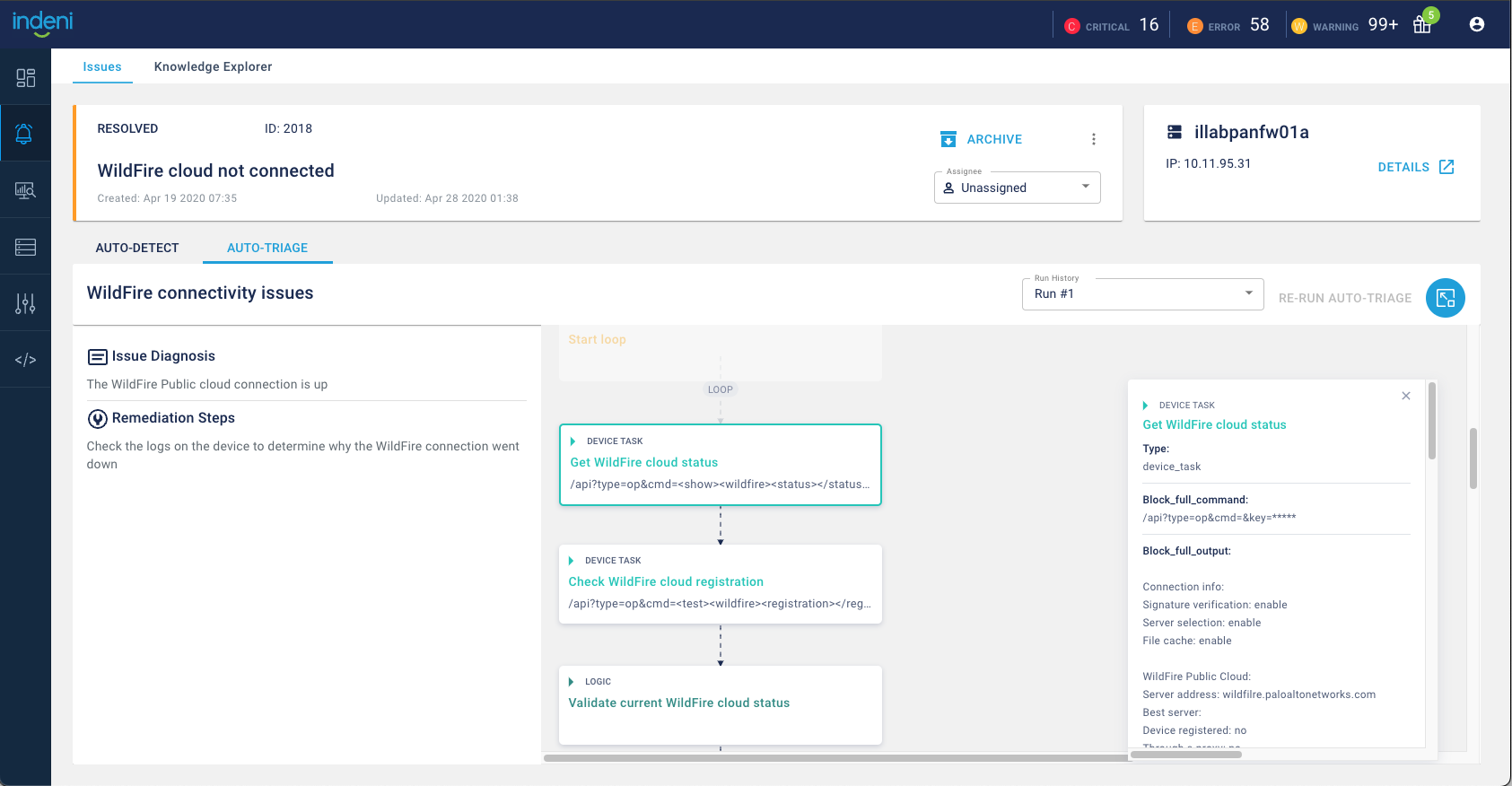Seven reasons to rethink firewall monitoring and boost automation
With BlueCat Infrastructure Assurance, you can better protect your network with automated alerts and suggested remedies for hidden issues in your firewalls.

Despite having multiple monitoring tools in your arsenal, firewall problems can go undetected.
It’s additionally frustrating when you find out about a service outage from a user. For example, the Border Gateway Protocol (BGP) peer from one of your firewalls went down and you just lost connectivity to the internet.
Why didn’t you get a notification of this impactful event? Admins expect them before issues get noticed by users.
IT operations teams can avoid costly outages if they receive advance notice about common issues that can lead to bigger problems. These issues might include hidden configuration skews, forgotten ongoing maintenance steps, or a lack of adherence to vendor or industry best practices.
In this blog post, we’ll briefly explain how BlueCat Infrastructure Assurance (BCIA) can proactively identify lurking issues before they become bigger problems. Next, we’ll look at seven reasons why you should want to move beyond standard monitoring and consider automation with the help of Infrastructure Assurance to make your network security firewall operations more efficient.
What is BlueCat Infrastructure Assurance?
The result of BlueCat’s acquisition of Indeni, BlueCat Infrastructure Assurance (BCIA) is a proactive monitoring and automation solution. Think of it as a virtual network expert for firewalls and for DNS, DHCP, and IP address management (together known as DDI), on duty 24/7.
Infrastructure Assurance provides deep visibility into firewall environments to flag early warning signs of issues. With our domain expertise codified into Infrastructure Assurance, the platform knows what to look for, interrogating your firewalls to ensure they are healthy. Infrastructure Assurance additionally offers the same visibility into DDI environments for BlueCat Integrity enterprise customers. This includes knowledge of the capabilities and features of the BlueCat implementation of DDI and its entire management layer.
Should it find something amiss, Infrastructure Assurance proactively alerts users that there might be a service failure—or any level of degradation of service—coming. And it provides a list of recommended remediation steps that admins can use as a guide to help address the problem.
In this example, Infrastructure Assurance detects that a BGP peer is down and provides a list of actionable remediation steps.

Seven reasons to move beyond monitoring to automation
To increase the efficiency of your network security firewall operations, below are seven reasons why you should rethink standard monitoring and consider automation with the help of Infrastructure Assurance.
No. 1: Maintaining five-nines service availability
Ensuring service availability is a primary goal for all IT operations teams. Five nines, or availability 99.999% of the time, is the paragon to strive for. There are three primary ways to ensure that your firewalls maintain service availability:
- Start with using established configurations
- Ensure adherence to best practices
- Deploy high availability configurations
Infrastructure Assurance constantly evaluates configurations against organizations’ gold standards. Furthermore, it continuously assesses devices for alignment with configuration recommendations from seasoned security practitioners.
Additionally, when it comes to high availability, it is important to have synchronized configurations. Infrastructure Assurance can identify accidental misconfigurations or even missing configurations (e.g., static routing table mismatch, preemption enabled, missing static routes) in a high availability environment.
No. 2: Human error is the chief cause of downtime
An outage analysis from the Uptime Institute revealed that, on average, human error causes 63% of outages—not faulty infrastructure design. Yet, enterprises still rely heavily on humans to perform critical IT tasks.
This is where automation can help. For example, you enabled debug for troubleshooting and forgot to disable it. Infrastructure Assurance can catch it to avoid the severe degradation of services that can follow.
Or you may have inadvertently misconfigured a feature, resulting in security risks. For example, if you have inadvertently disabled DNS sinkholing in one of your anti-spyware profiles, Infrastructure Assurance will notify you of such a misconfiguration.
No. 3: Save time and work more efficiently
As a security engineer, it can seem like you’re always putting out fires. There is never enough time to work on strategic initiatives or learn new skills. This is where automation can make a difference to improve efficiency.
What if you could automate time-consuming compliance audit tasks? What if you could effortlessly identify common vulnerabilities in your infrastructure? Or if you could seek data enrichment through automation?
Infrastructure Assurance has over 100 automation elements that can help you to identify security risks and compliance violations. Regardless of your regulatory compliance requirements, we likely have the security control validation in place to help you prepare for an audit. We also have many out-of-the-box integrations with SIEM, ITSM, and AIOps correlation tools, all with time saving and efficiency in mind.
No. 4: Easily forgotten maintenance tasks
Maintaining service availability requires ongoing maintenance. You don’t want to forget about maintenance routines until you actually need to perform a restore.
Tasks like device configuration backup are important to ensure your security infrastructure is safe from failure and disruption. Infrastructure Assurance automates device configuration backup and notifies you if the backup is unsuccessful.
One of the most easily forgotten maintenance tasks is certificate renewal. Your firewalls use certificates for a variety of purposes. Valid certificates are needed for activities such as inbound SSL inspection, user authentication, device authentication for remote users, and IPSec site-to-site VPN. Not having a valid certificate will likely impact services.
Infrastructure Assurance provides warnings in advance if certificates are about to expire, giving you ample time to take action. Whether for vendor support or access to threat intelligence, Infrastructure Assurance also checks for valid licenses to ensure software license compliance.
In this example, Infrastructure Assurance notifies the user that their Checkpoint license usage limit is approaching.

Automating these maintenance activities can truly help maintain the health and performance of your firewalls.
No. 5: Firewalls need dynamic content updates
To equip firewalls with the latest prevention and intelligence, firewalls frequently get updates from external sources hosted in the cloud. Timely updates are key to protecting your networks before the threat becomes widespread.
By always keeping an active connection, Infrastructure Assurance constantly checks that packages are kept up to date. We also ensure that Infrastructure Assurance follows best practices. This includes, for example, always making sure the action is set to “download and install,” and that the frequency is set to one minute for signature updates.
In this example, Infrastructure Assurance notifies the user that they have lost connectivity to WildFire cloud.

Your firewalls are likely importing objects (IP addresses, URLs, and domains) from an external web server to protect against malicious hosts. But Infrastructure Assurance goes beyond just checking for reachability to the web server hosting the list. It also ensures that the list is not empty and that it has not reached capacity.
No. 6: Skill shortages
Enterprises typically have a limited number of employees with device expertise that can keep up with the rising complexity of network and security infrastructure. Many organizations are struggling to find skilled IT staff for their complex data centers.
Infrastructure Assurance can help address the growing IT talent shortage with automation. Infrastructure Assurance has automated the world’s best practices and valuable lessons learned from industry experts. Many of our users gain specific knowledge from the descriptions of issues found and recommended remediations to address them, which are built from real-world experience.
Automating repetitive IT tasks can be an effective solution to address the widening skills challenge.
No. 7: Improve mean time to resolution
Uncontrollable events make it impossible to guarantee 100% uptime. When you experience an outage, you want to quickly restore the service.
When Infrastructure Assurance detects an issue, it will automatically apply device-specific domain knowledge to the problem. It performs analysis to detect the root cause, all without any human intervention.
Applying domain knowledge is key to determining what relevant information needs to be collected while the problem is happening so that an accurate diagnosis is possible. Automatically investigating a problem leads to detailed and prescriptive remediation steps to accelerate resolution.
Get started with BlueCat Infrastructure Assurance today
In an increasingly automated world, enterprises are rethinking how network and security infrastructures are managed. Why not let Infrastructure Assurance bootstrap your infrastructure automation initiative? Automation makes a big impact on the overall efficiency of your IT operations. Try Infrastructure Assurance or request a demo today.




